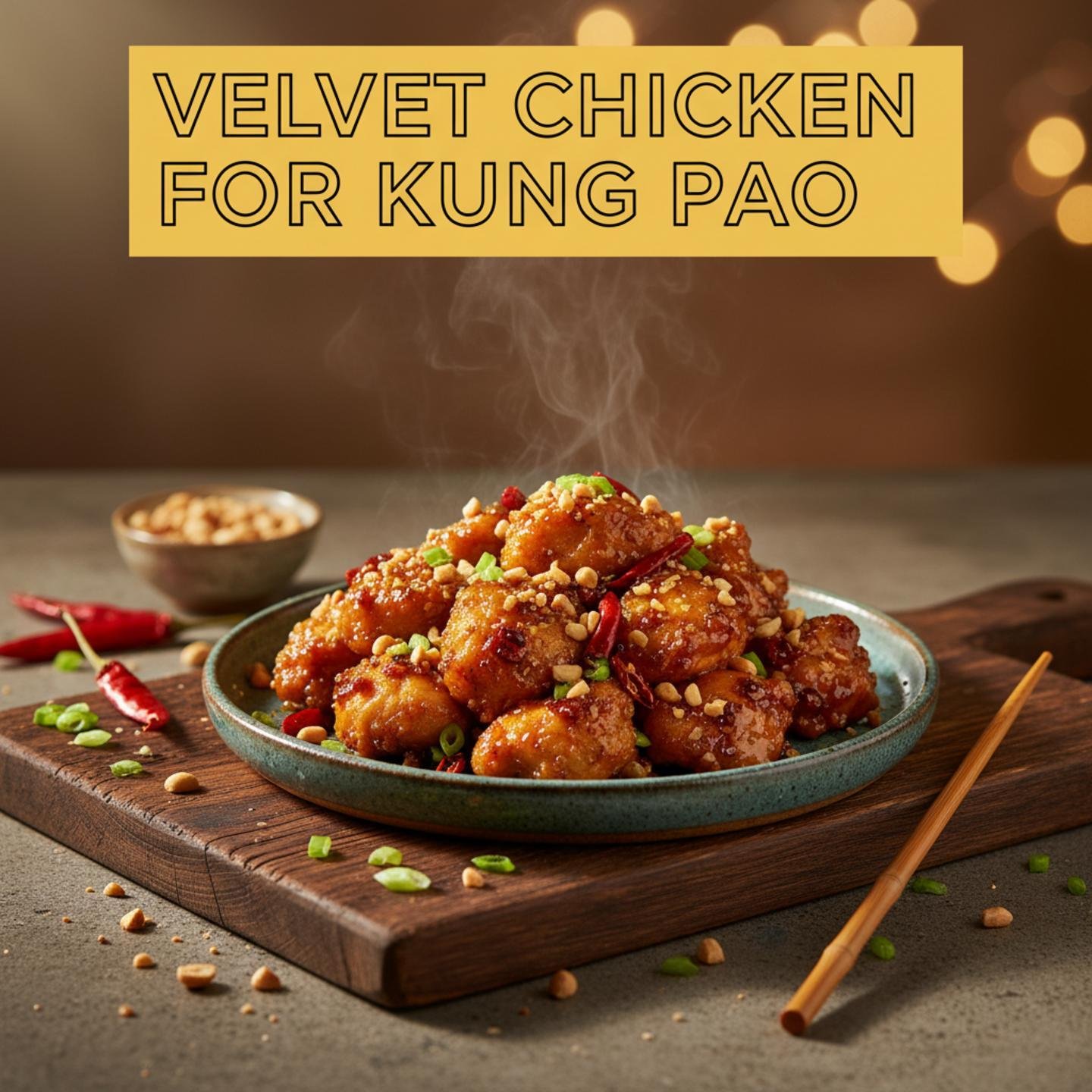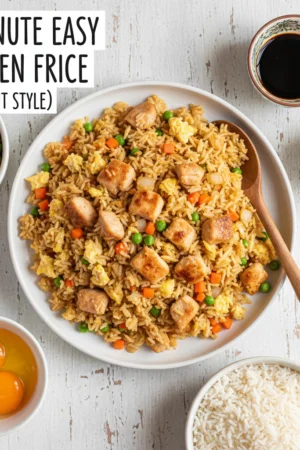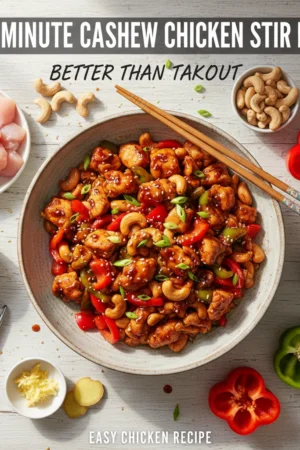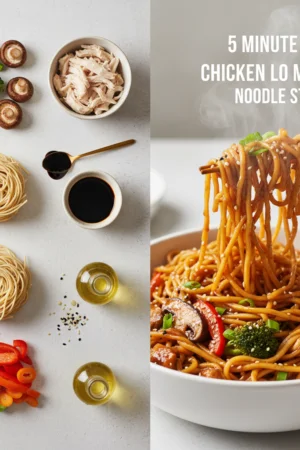Discover the Chinese culinary secret of velveting chicken, a simple technique that yields remarkably tender and juicy poultry, perfect for classic dishes like Kung Pao and other stir-fries.

Velvet Chicken for Kung Pao
Discover the Chinese culinary secret of velveting chicken, a simple technique that yields remarkably tender and juicy poultry, perfect for classic dishes like Kung Pao and other stir-fries.
Ingredients
- 500 g boneless skinless chicken breast or thighs
- 1 large egg white
- 2 tbsp cornstarch
- 1 tbsp Shaoxing wine or dry sherry
- 1 tsp light soy sauce
- 0.25 tsp salt
- 2 tbsp vegetable oil plus more for velveting
Instructions
- Cut the chicken: Slice the boneless, skinless chicken into uniform 1-inch pieces. Prepare the marinade: In a bowl, combine the chicken pieces with the egg white, cornstarch, Shaoxing wine, light soy sauce, and salt. Mix well until every piece of chicken is coated. Marinate: Let the chicken marinate for at least 15 minutes at room temperature, or up to 30 minutes in the refrigerator. Velvet the chicken: Heat 2 tablespoons of vegetable oil in a wok or large skillet over medium-high heat. Add the marinated chicken in a single layer, ensuring not to overcrowd the pan. Stir-fry for 2-3 minutes until the chicken is mostly cooked through and opaque, but still very tender. Alternatively, you can blanch the chicken: bring a pot of water to a gentle simmer, carefully add the marinated chicken, and cook for 1-2 minutes until just cooked through. Remove with a slotted spoon. Drain and set aside: Remove the velveted chicken from the wok or water and drain any excess oil or water. Set aside to use in your Kung Pao or other stir-fry recipe. Prepare your Kung Pao sauce: While the chicken is velveting, prepare your Kung Pao sauce according to your chosen recipe, ready to combine with the tender chicken.
Notes
Ensure chicken pieces are uniform for even cooking. Do not overcrowd the pan when cooking the chicken; cook in batches if necessary. Overcooking the chicken during velveting will negate its tenderizing effect. This technique is also excellent for beef or pork in stir-fries.






